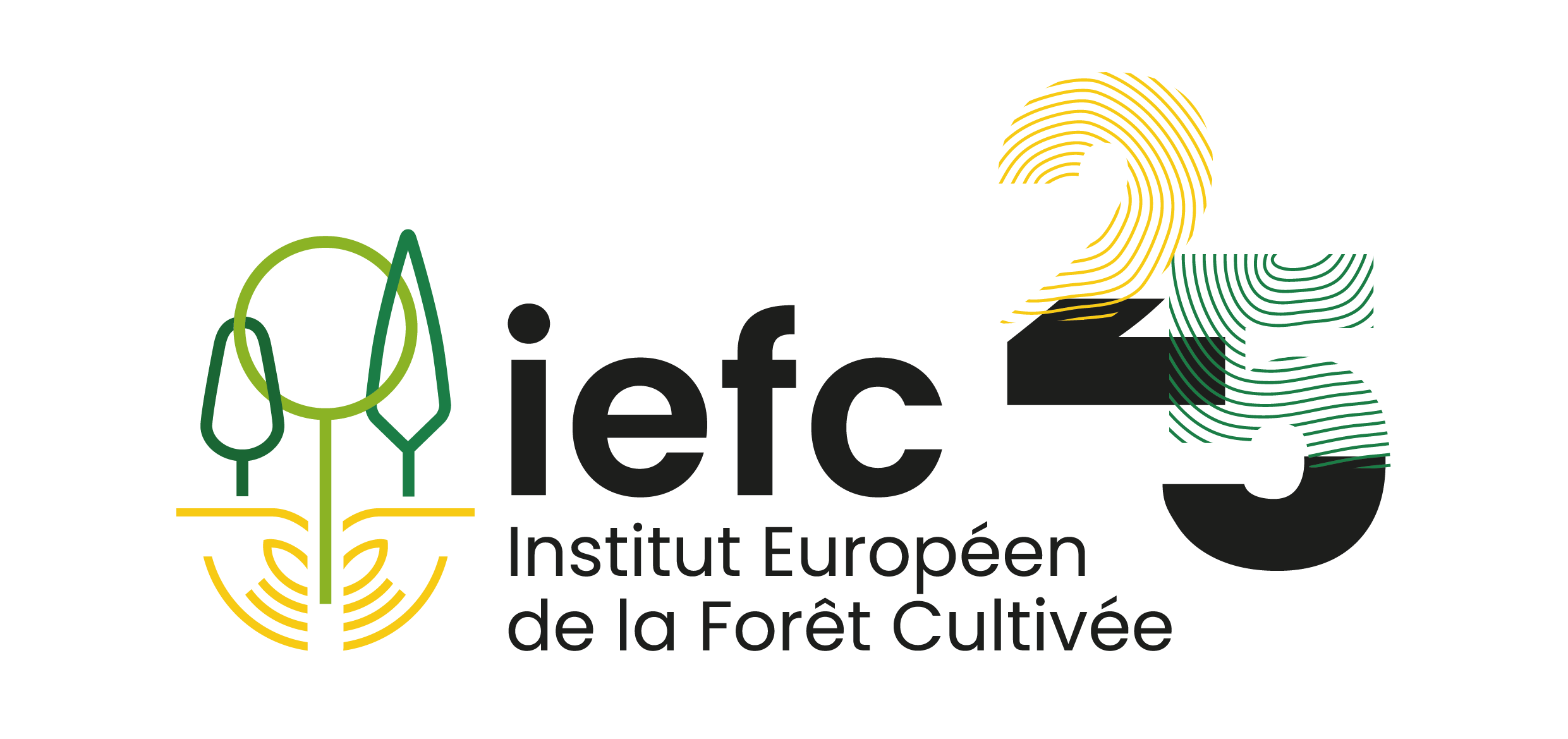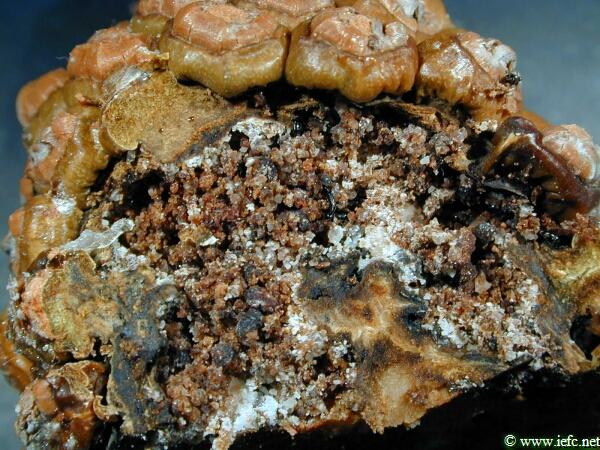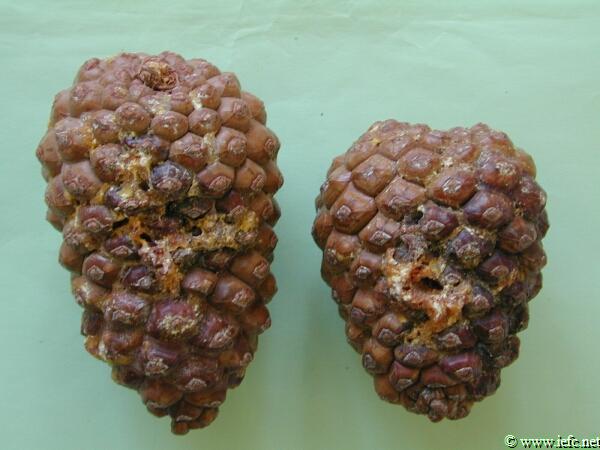Pine cone moth
Dioryctria mendacella (Lepidoptera, Pyralidae)
Host tree
Identification
- In spring and summer, presence of contrasting brown areas on green cones in their final growing season.
- Asymmetric development of cones due to larval feeding activity.
- On the cones, irregular holes and breakings with resin masses mixed with coarse excrements (Photo 1).
- Inside the cones, peripheral galleries filled with coarse, round excrements and resin (Photo 2).
- From May to February presence of larvae in the galleries. Larvae are purplish-red dorsally, whitish-pink ventrally, with a shining black head and shield (Photo 3). Young (5 mm long) to mature (25 mm long) larvae may be present in the same cone.
- Possible confusion with the weevil Pissodes validirostris : in this species larvae are creamy, legless and C-shaped.
Damage
- Partial or total loss of seeds in the cones.
- Important economic losses in Stone pine cone crop.
Biology
- There are two, overlapping generations per year.
- Moths fly from mid spring to late summer, peaking in May and September; several eggs are laid singly on the cone scales.
- Larvae bore peripheral galleries inside the cones, destroying the seeds.
- Mature larvae leave the cones and enter into the soil where they pupate.
- Development of first generation (from eggs laid in May) takes 4 months (spring/summer); second generation (from eggs laid in September) extends to 9 months (overwintering).
- Larvae of all ages overwinter inside the cones from October to February. At the end of the winter, mature larvae descend to pupate, younger larvae continue their development attacking new cones.
Risk factors
- Stone pines are preferred to other pines.
Distribution
- Mediterranean Europe, Armenia, Asia Minor, Pakistan and China.
Pest management
Monitoring
- Observation of attacked cones during cone harvesting (autumn/winter).
Preventive measurements
- Mechanical removal and destruction of attacked cones with larvae during cone harvesting (autumn/winter).
Curative control
- Insecticides are not effective and are usually not registered against this pest in Europe.
Climate change
- The potential effect of climate change on this species is unclear, except that global warming will probably allow the moth to shift its range margin northwards.




